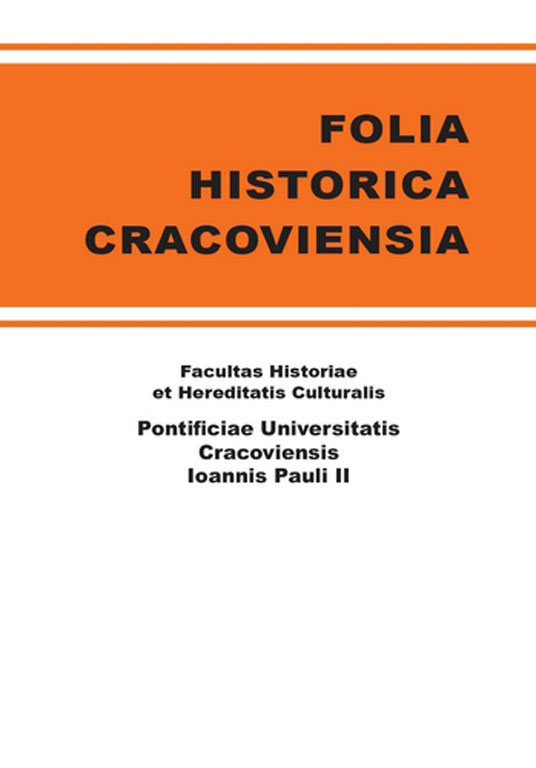Kryzys i reforma życia zakonnego XIV–XVI wieku i jego wpływ na dominikański klasztor łęczycki
DOI:
https://doi.org/10.15633/fhc.218Słowa kluczowe:
reforma życia zakonnego, XIV-XVI wiek, klasztor dominikanów w ŁęczycyAbstrakt
Although to a lesser degree, the 14th century crisis of religious life also embraced Mendicant Orders, including the Order of Preachers. Dominican brothers were obliged to respect the principles written down in the rule of St Augustine as well as in the constitution of the order which regulated the life of the Order as well as defined the Order’s organizational structure. Friars however, sometimes gave in to temptation and broke the rules of their communities. The convents’ style of life with characteristic disregard for the notion of religious community in the order and omnipresent individualism in every field was in conflict with the spirit and content of the rules and constitution of the Dominican, and was referred to as conventualism. The call to initiate a thorough reform of the law in the Order was given by Master General Raymond of Capua. At his command in every Dominican province within one year one monastery with at least 12 brothers was required to introduce the rule of regular observance – the renewal of relations from the period of the formation of the Order and strict adherence (observare) to the Order’s rules. The basic condition of the observance was enclosure. Observant Convents were excluded from the authority of the Provincial and subjected to the power of vicars designated by the Master General. This led to the creation of separate congregations sometimes uniting reformed monasteries from different provinces and countries.
In the Polish province the observant reform officially began on 30 July 1432 in the Wroclaw monastery of St. Adalbert. The success of the reform was confirmed by Chelmno Chapter in 1519 only in the orders in Glogow, Legnica, Krosno (part of Silesia province) as well as in part of Mazovia province, whereas the entire division of the province of Greater Poland together with the Łęczyca monastery was subjected to special care of Andrew from Parczew. The same chapter tells Vicar General of the province to re-visit the convents and reintroduce the reform. The negative effects of the collapse of observance by Łęczyca Friars Preachers were serious and they appeared immediately. The convent had never exceeded the number of 12 monks present at one time till the end of its existence in 1799.
There were several reasons for the fall of observance in Poland: the reform was superficial in its character, both conventualists and observants were under the authority of the provinces, small convents were poverty stricken. According to J. Kłoczowski the initiators of the reform wrongfully restricted the reform to moral issues only, ignoring the structural aspect. It led to many monks behave passively towards the attempts to introduce observance.
Pobrania
Opublikowane
Numer
Dział
Licencja
Prawa autorskie (c) 2012 Tomasz Stolarczyk

Praca jest udostępniana na licencji Creative Commons Attribution-NonCommercial-NoDerivatives 3.0 Unported License.
Autorzy publikujący w czasopiśmie udzielają jego wydawcy zgody o następującej treści:
- Autor zachowuje autorskie prawa majątkowe do utworu, a jednocześnie udziela wydawcy czasopisma zgody na jego pierwszą publikację w wersji drukowanej i wersji online na licencji Creative Commons Uznanie autorstwa 4.0 Międzynarodowe oraz zgody na wykonywanie opracowań, w tym przekładów.
- Autor ma możliwość udzielania zgody niewyłącznej na opublikowanie utworu w wersji, która ukazała się w czasopiśmie (np. zamieszczenia go w repozytorium instytucjonalnym lub opublikowania w książce), wraz z informacją o jego pierwszej publikacji w czasopiśmie.
- Autor może umieścić swój utwór online (np. w repozytorium instytucjonalnym lub na swojej stronie internetowej) jeszcze przed zgłoszeniem utworu do czasopisma.

